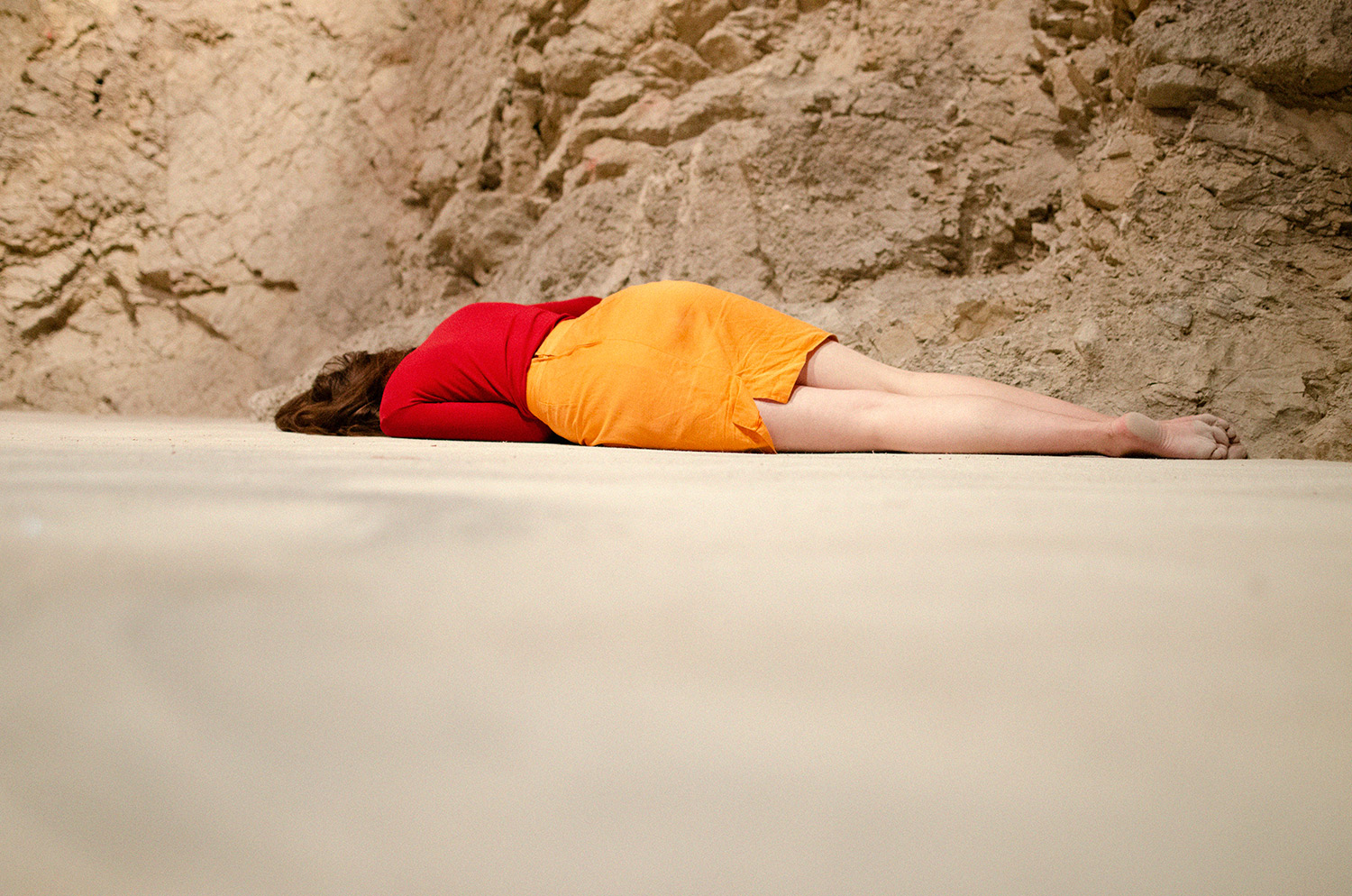
15 Jul Alice Weber
Residency period: October-November 2018
Alice works with the body in relation to space. During her first month in Centro Negra, she finds the opportunity to intervene with a big space, to turn it upside down, to transform it, to penetrate its guts.
The challenges she faces are: How to activate a space without fetishising its natural beauty? How to move beyond prescribed aesthetics of the body in landscape? How to occupy a blurred inside/outside, with this earthy space, in opposition to the usual hygienic space of dance?
She invites slowness, suddenness and failure; engaging skill in a way that undermines itself. Navigating tensions and difficulties -to question the values that the space emanates- helps her make sense of the experience that the space offers.
Alice traverses a process in which she discovers that she is the one transformed by the space, and that responding to its features is a way to embody its questions.
In the second month of her residency, Alice has moved her performance-based work outside and into video. The combination of natural and virtual site has opened investigations into the inconsistencies of experience in this setting.
The idyllic landscape and lifestyle of Blanca conjure up a romanticism that she finds fascinating yet elusive. To make sense of this, she has turned to a personal mythology of castles, princesses, fairies and giants — finding it completely inadequate against the splendour of Blanca. The inability to fully embody place indulges her cynicism about the tropes and expectations of the contemporary female body, particularly one raised on Disney and thrust into constant, self-surveilled mediation. It is a stunted mythology, endlessly mediated and capitalised in popular culture. Against the backdrop of Blanca, thinking through such mythology is an inevitable failure.
Playing with perspective and proportion, she troubles a smooth reading of the body with the figure of a giant, peaceful, watching woman. The triptych is a format that connotes grandeur, which her understated choreographies struggle to fulfil. Barely perceptible manipulations of time detach the work from its moorings in reality, but only enough to trouble the levels of reality themselves. Reformulating tropes of the feminine through character points to the constructs and fictions that are invested in notions of land, nature, body and woman. In this sense, taking on a mythological role does not so much hinder a ‘real’ experience, but exposes the notion of embodiment as already full of fictions and contradictions.
Opposite, Alice fragments the castle, unpicking it’s status as a looming symbol of myth and history. In an environment that is saturated with signification, her movement is illogical and corrupts regulations of the body in public, non-performance space. In contrast to the benevolent giant, here brute video edits slash the body through space, speed it up to the point of absurdity, or teleport it meaninglessly. These movement experiments are far from any typical understanding of the body in space, but show a failed embodiment that dialogues with the attempted mythology opposite.
With this inappropriate approach to making sense of the place, she raises the question: what would be appropriate? For Alice, any attempt is always melancholy, in its strangeness and failure; but this is a no less valid and real experience of natural beauty.










